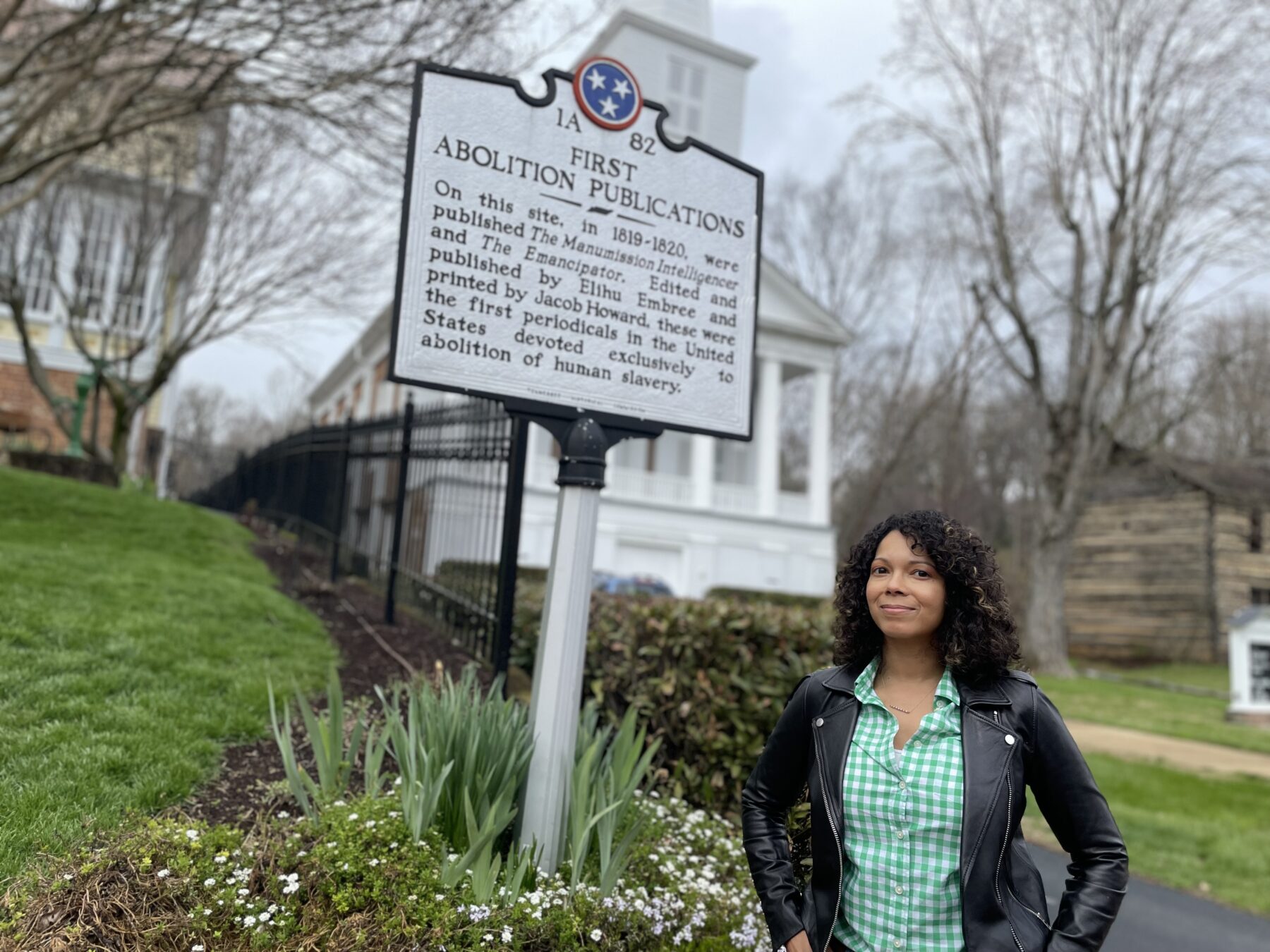
Last year, best-selling author Ibram X. Kendi launched an ambitious project with The Boston Globe: an independent digital magazine that “will strive to hasten the end of racism in the 21st century.” He believed there needed to be a radical journalistic response to 2020’s racial reckoning, and resurrecting The Emancipator, the country’s first anti-slavery paper, was the way forward.
Over the past year, The Emancipator has churned out a stream of biting, solution-oriented commentaries eviscerating systems and outmoded mindsets that uphold structural racism. One piece argued that Congress can shrink the racial wealth gap by revamping our credit-scoring system; another explored the double standard of former President Donald Trump evoking the Fourth Amendment against unreasonable searches and seizures — a right often denied to Black and brown people — in his refusal to turn over classified documents.
While The Emancipator recently separated from the Globe, it remains housed in Kendi’s Center for Antiracist Research at Boston University and committed to reframing the national conversation on race. Publisher and Editor-in-Chief Amber Payne, who also founded NBCBLK, spoke to Equity Lab about the promises of solutions journalism, the challenges of building an antiracist newsroom for today’s audiences and what’s in store for The Emancipator as it celebrates its first anniversary. Our conversation has been edited for length and clarity.
What was the thinking behind bringing back The Emancipator, founded in 1820, to the modern day?
It’s a reimagining and revival of the first abolitionist paper, which started in Jonesborough, Tennessee, by Elihu Embree [who was a slave owner]. These abolitionist papers were unflinching in their call to end slavery. They were helping Black Americans envision what it would look like to be fully integrated into the American project. They wanted the community to imagine what life should and could be like with equity and equality.
The modern-day Emancipator has that approach: Things can be done right now to end structural racism, and the wealth and health equity gaps. As journalists, it’s our job to find those ideas and solutions at the highest level of policy or academia.
Which are the most impactful stories The Emancipator published over the past year?
The most successful commentaries took the news and did something unexpected, like the one about Biden and policing. A standout video story is “A letter to my White sons,” where a white mom breaks down the flags of white nationalism [that pervade social media]. Our story “Saving Black homes lost to tax inequity” looked at the practice of selling tax debt in Chicago, which led to folks losing their homes. People in the community started a nonprofit to help them pay off their debt. It’s a solutions story that other communities can replicate.

Who is The Emancipator addressing? How did you go about growing an audience and getting people to care about structural racism?
We were definitely looking for a multiracial, multigenerational readership. We started casting a wide reach, thinking about content as very accessible and readable by people of different ages. There were two prongs of readers we wanted to reach. We knew there would be people who are new to the conversation. We also wanted to reach people who have long been a part of this movement for justice who want to have their voices heard. This isn’t for scholars only, and we also didn’t want to tell stories through the white gaze. We focus on solutions because we already have enough commentaries and news stories framing the problems. We want to give people the tools to have a persuasive conversation based on facts, whether it’s at an awkward Thanksgiving dinner or at PTO meetings about banning books.
Do you think Americans are as interested in doing better when it comes to race as they were immediately after George Floyd’s killing?
Some are and some are not. After Floyd’s death, newsrooms funded positions geared toward reporting on race, but will those positions remain? Will companies continue to put money where their mouth is? Often, it’s two steps forward, one step back. People get tired, people move on. That’s not surprising and it shouldn’t be depressing. That’s just how things work.
We visited Jonesborough recently and got to see the quarters where Elihu Embree held the slaves he inherited from his wife. Historians on the ground told us he wanted to free them but couldn’t because he was in a precarious financial situation. There’s a parallel to folks today who say they support racial justice and equity, but maybe just use a hashtag or put up a black square. How far are you taking [that support]? For some people, it can be complex.
What have you learned in the first year of publishing?
You can’t do everything. We’re building the plane as we fly it. We’re still hiring, developing our org chart, our revenue strategy. It’s challenging to try to do many different things from video to strong editorial writing to comics. We’re trying to build a sustainable product, so another challenge is fundraising. As part of Boston University, we work with their alumni development department to seek grants and individual donors.
Many journalists say, “journalism shouldn’t be activism,” particularly when it comes to race coverage? What are your thoughts?
I believe journalism and advocacy can be separate, but journalism is my activism. By choosing what stories we publish at The Emancipator, we’re showing perspectives that we feel are important. Giving voices to certain people is how we shape debate around these issues. I do believe there’s a line for journalists not to cross — participating in a protest you’re covering would be a conflict of interest, for example — but there’s an opportunity to inform people on what action they can take. We can do that in a way that’s not telling people what to do. People are smart and can decide for themselves. Some of our social posts have a sharper tone to them. We justify that because it’s about humanity.
The Emancipator is hosting a series of “community convenings” to engage with readers. There’s a planned conversation, in partnership with doctors from Boston Medical Center, with breastfeeding and new mothers about the difficulties of navigating an inequitable health-care system. Can you give more details?
We’re looking at different story topics and communities we can go into to do “convenings,” which are community listening sessions. We’re trying out this approach with a breastfeeding solutions circle [in Boston’s Roxbury section], where we will invite new and expecting mothers and ask them: What is it like for you? What resources do you need? What’s the system not giving you? What’s working? The answers could influence our coverage and essay writing. We’re hoping it helps us build trust with the community. That’s a key issue: People don’t trust the media. One solution is audience research and engagement so we’re not just reporting what we think they need to know.
When we went to Jonesborough, we met with storytellers who work with amplifying stories of Black Appalachians. We met with faculty members at East Tennessee State University, one of whom, Daryl Carter, ended up writing a piece for us [about the expulsion of the two Black state representatives who protested against gun violence]. We’re talking to community members about ways we can come back and stay engaged with students at the college.
Do you feel that a lack of audience engagement, and not being in tune with the communities they serve, is a broader issue that news outlets must address?
For too long it’s been a one-way street in newsrooms as far as engaging with the audience. We’re news people — we tell you what you need to know. There’s not enough reading and listening to comments, acting upon them and serving communities. That’s been an issue in legacy newsrooms especially.
What’s new for The Emancipator in 2023?
We definitely want to increase our video output. On social, video and reels really resonate with our audience. We want to put out a lot more short commentaries and highly produced longer-form content. We hope to reach more communities that lack exposure, like the Black Appalachian community in Tennessee. We hope to have a convening around reporting on race, where we would invite journalists as well as those who are teaching how to report on race in journalism schools and academia. And we do hope to grow our team and double in size by the end of the year [to eight staff members], with the addition of an editor and video resource and audience engagement editor.



